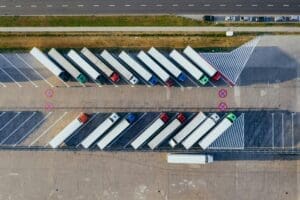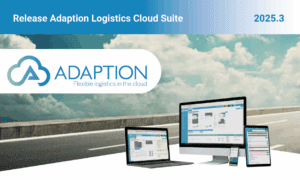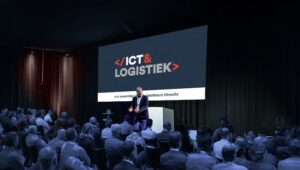The Glass City as a Logistics Powerhouse: Why 'Westland' is leading in Fresh Produce Distribution
31-7-2025 – Marcel Hoogenraad – Reading time: 8 min

“For many years I have been fascinated by how the Westland has evolved from a greenhouse region into a logistics powerhouse. Driven by my interest in automation, my work at Adaption, and my personal connection to the region, I decided to take the time to truly explore this unique ecosystem. What began as curiosity, fueled by countless trips along Honderdland and conversations in the field, grew into this piece: an attempt to combine knowledge, observation and passion into one story about the power of fresh‑produce logistics.”
The Westland, known in the Netherlands as “the Glass City,” forms the vibrant heart of European fresh‑produce logistics. What once began with the cultivation of flowers, plants, vegetables and fruit in vast greenhouses has grown into an advanced logistics ecosystem specializing in speed, quality and efficiency. Every day, large quantities of locally produced goods such as tomatoes and peppers are processed here, alongside imported items like avocados and mangoes that arrive from international markets. Thanks to innovative processes such as cross‑docking, customer‑specific packaging and advanced supply‑chain management systems, the Westland has developed into the international logistics hub for distributing both locally grown and imported fresh produce.
Greenhouse horticulture in numbers: the foundation of fresh produce logistics
The Westland boasts over 2,300 hectares of greenhouse horticulture, making it the largest contiguous greenhouse area in the world. The region is home to more than 600 specialized horticultural businesses, which collectively deliver millions of kilograms of fresh produce annually.
Breakdown of greenhouse usage:
- Fruit and vegetable greenhouse: approx. 45% (mainly tomatoes, peppers, cucumbers, eggplants)
- Floriculture (flowers and plants): approx. 25%
- Other (e.g. potted plants): approx. 30%
Production and economic value:
- Total Dutch greenhouse production value: approx. € 7 billion per year
- Export value of fruits and vegetables (NL): € 13.1 billion, of which 95% is within Europe
- Top export markets: Germany, Belgium, United Kingdom
From vine cultivation to high‑tech fresh‑produce cluster: Westland’s logistics evolution
1900–1950: The seed of the greenhouse horticulture region
Westland’s logistics story begins in the early 20th century with the rise of vine cultivation in cold and later heated greenhouses. The region quickly became known for its innovative growing methods and intensive collaboration among growers. Its location near Rotterdam and The Hague enabled fast delivery to urban markets. Early local auctions and cooperatives were established, laying the foundation for a collective trading structure.
1950–1980: Rise of floriculture and scaling up
After World War II, Westland grew as a center for floriculture. More flower, plant and greenhouse vegetable varieties emerged, such as tomatoes and peppers. Through scale and mechanization, the region became increasingly efficient. With the establishment of FloraHolland in Naaldwijk, one of the world’s largest flower auctions emerged, a central hub for logistics, distribution, and pricing. Auctions, transporters and packers increasingly clustered together.
1980–2000: From regional hub to European trading center
During this period the focus shifted toward export and European markets. As demand for Dutch fresh produce grew, export lines to Germany, the UK and Scandinavia developed rapidly. At the same time, the need arose for better‑organized business parks to concentrate logistics functions. This led to the first plans for a specialized agri‑logistics site: Honderdland in Maasdijk.
2000–2014: Emergence of Honderdland as a logistics engine
Development of Honderdland began around 2000, marking a new phase in Westland’s logistics infrastructure. In the early years plots were issued and transport companies, packers and shippers gradually clustered together.
From 2010 onward, major fresh‑produce companies established themselves at Honderdland, including:
- Nature’s Pride (exotic produce such as avocados and mangoes)
- Greenpack (sorting and packing center)
- Cool Control (conditioned storage and handling)
- Growers United (vegetable growers’ cooperative)
- Harvest House Logistics, founded in 2017, as a logistics platform for growers
These players strengthened each other: by being close together, processes such as cross‑docking, sorting, packing and repacking could occur in record time, often within a single day.
2015–present: Mature cluster with international clout
Over the past decade, Honderdland has become the agri‑logistics heart of the Westland. New companies joined, including:
- HZ Logistics B.V., specializing in groupage transport across Europe
- De Jong Verpakkingen, which in 2023 opened one of Europe’s most modern corrugated‑board factories
With more than 100 hectares of business park and continuous inflow of companies from the fresh produce and packaging sectors, the cluster has developed into a complete ecosystem. Growers, service providers, software suppliers, transporters and packers are literally within walking distance of each other.
In this environment collaboration is not just possible, it’s natural; a model increasingly cited as an example of integrated logistics in the fresh‑produce chain.
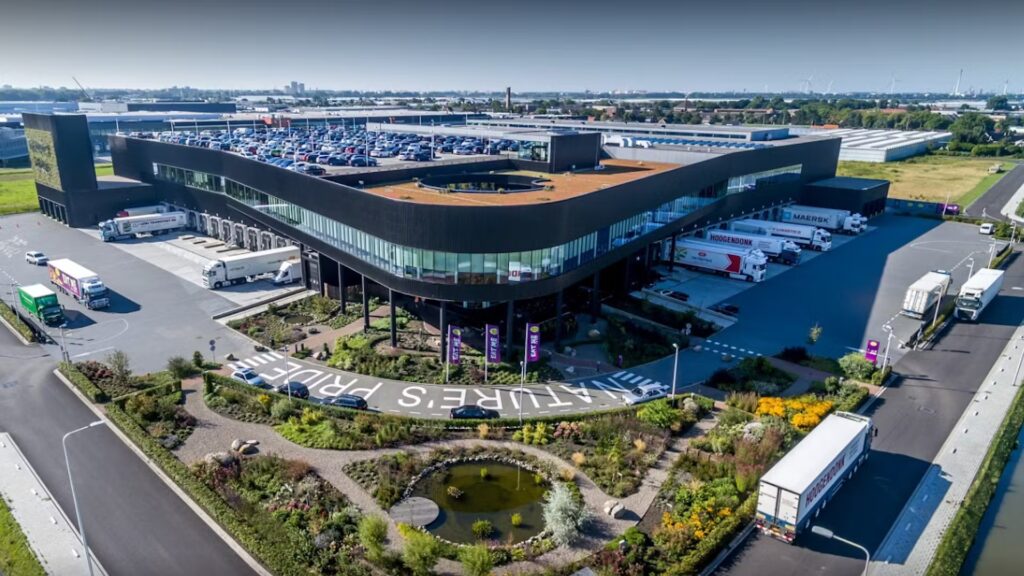
Why Westland? The 5 pillars of a logistics powerhouse
1. Strategic location in the economic heart of the Netherlands
Westland is located in the middle of the Randstad, between cities like Rotterdam, The Hague, Amsterdam, and Hoek van Holland. This geographical position provides direct access to one of the most densely populated and economically active regions in Europe. Thanks to a fine-meshed network of highways and provincial roads, all major distribution centers, ports, and urban areas are reachable within hours. The proximity to markets, international trade channels, and knowledge institutions makes Westland an ideal base for both production and logistics.
2. Global connectivity via sea and air freight
With the Port of Rotterdam just 25 kilometers away and Schiphol Airport less than an hour’s drive, Westland enjoys exceptional logistical access to both sea and air freight. This allows fresh products to be exported at lightning speed to European retailers, as well as to distant markets such as the Middle East, Asia, and North America. This multimodal access is crucial in a sector where freshness, speed, and reliability make all the difference.
3. Tailored infrastructure for fresh produce logistics
Westland offers a high degree of spatial clustering of companies involved in growing, packing, sorting, repacking, and transporting fresh produce. Business parks like Honderdland are specifically developed for the fruit and vegetable sector and offer cross-docking facilities, cold storage, packaging lines, and transport hubs all within close proximity. This geographical closeness directly translates into shorter lead times, fewer handling steps, and optimal control over quality and temperature—essential for perishable goods.
4. Leader in sustainable logistics and the energy transition
The region takes its sustainability responsibilities seriously. Many companies participate in energy collectives where heat, CO₂, and electricity are shared between greenhouse horticulture and industry. In addition, both public and private entities are committed to greening the logistics chain through:
- Charging infrastructure for electric transport
- Research into modal shift projects via inland waterways and rail (e.g., from Greenport West-Holland and the Verspact region)
- Sustainable packaging solutions such as recycled corrugated cardboard (e.g., by De Jong Verpakkingen)
This combined approach leads not only to lower emissions, but also to a more robust and future-proof logistics chain.
5. Strong ecosystem of knowledge, innovation, and digitalization
Westland excels in collaboration between entrepreneurs, education, technology companies, and government bodies. Initiatives such as the Flora Campus Westland and Dutch Fresh Port ensure continuous development in innovation, digitalization, and workforce access. Additionally, more and more companies are integrating advanced WMS, TMS, and FMS systems to make their supply chains fully transparent, traceable, and scalable.
This knowledge infrastructure enables constant improvement, adoption of new technologies (such as AI-driven planning or vision sorting), and the attraction of young talent for logistics, agricultural, and technical roles.
Functional links: how Westland companies together form one logistics ecosystem
Westland’s strength lies not only in its size or location, but in the way logistical functions geographically converge. At business parks such as Honderdland, numerous specialized companies, ranging from growers’ cooperatives and packagers to logistics service providers, form a tightly-knit network. Although each plays its own role, the physical proximity of these companies fits perfectly with the dynamics of a fresh produce chain where speed, flexibility, and precision are crucial.
Cross-docking plays a central role in this ecosystem. Incoming products are not stored but directly forwarded to outgoing shipments, often within hours. Think of pallets of tomatoes, peppers, or avocados that are scanned, bundled, and prepped for further distribution upon arrival. Cool Control focuses on temperature management and handling, while companies like Greenpack specialize in sorting and packaging fresh produce.
Moreover, the fresh trade demands constant adaptation to customer needs. Packaging and repackaging are therefore indispensable links in the chain: products are tailored to specifications per country, supermarket brand, or sales moment. Think of private-label packaging, relabeling, or quality sorting. The proximity of players like De Jong Verpakkingen, with its ultra-modern cardboard factory, enables packaging to be quickly and custom-made.
What makes this system powerful is the combination of physical clustering and digital control. Many of these processes are monitored in real-time via integrated systems that unify order processing, inventory management, packaging instructions, and transport planning into a single streamlined operation. For Adaption, this is a key development: our platform is designed specifically to support these links, from cross-docking to repackaging, in one environment, with speed, traceability, and customer focus at its core.
In a chain where every action matters, the importance of smart process integration becomes clear. Westland shows how spatial and digital integration can reinforce one another, providing a crystal-clear example of what tomorrow’s fresh produce logistics looks like.
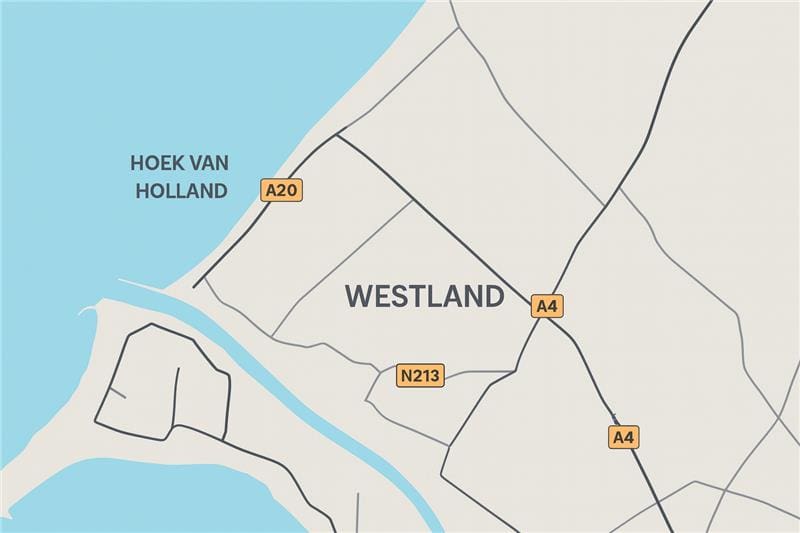
Looking to the future: why Westland remains a leader in fresh produce logistics
As the fresh produce logistics chain becomes increasingly complex and international, Westland continues to innovate, not by growing ever larger, but by operating more intelligently, with a stronger focus on collaboration, sustainability, and digitalization. The coming years are all about transformation: from traditional transport flows to integrated, data-driven, and emission-free logistics. For companies looking to lead the way, Westland is not just a region of production, it’s a testing ground for tomorrow’s logistics.
Westland’s logistics ambitions are built on a clear, forward-looking vision: to create a fresh produce chain that is not only faster and more reliable but also smarter and more sustainable. In a region where thousands of tons of fresh products are moved daily, optimizing infrastructure, data exchange, and modality is not a luxury but a necessity. Led by Greenport West-Holland and regional partners, research is currently underway into modal shifts via rail and inland shipping, while companies are actively investing in real-time monitoring, zero-emission transport, and smart transshipment locations. The geographic clustering of growers, processors, and logistics providers strengthens an ecosystem where innovation and collaboration have become second nature.
For Adaption, as a provider of WMS, TMS, and FMS solutions that streamline these very processes, these developments are especially relevant. The digital backbone of fresh produce logistics is increasingly moving toward integration, transparency, and predictability, and that’s exactly where we add value. By closely following these developments and actively contributing to the digital transformation of Westland’s logistics landscape, we continue to support our clients in a supply chain that is becoming more demanding and international. Westland is not only a source of inspiration but a living laboratory for the future of fresh produce logistics.
In conclusion: from greenhouse to continent in less than a day
Anyone who, like me, drives past Westland’s logistics hubs early in the morning will see trucks constantly coming and going, carrying crates full of tomatoes, mangoes, and peppers. What may seem like routine at first glance is actually a feat of logistical precision. A batch of avocados arriving at 6:00 AM can be sorted, packed, and labeled by 9:00, and ready to depart for a supermarket in Hamburg, Paris, or Copenhagen by noon.
It remains impressive to see how this system operates day in and day out. That speed is no coincidence, it’s the result of years of optimization, smart systems, and an exceptionally fine-meshed ecosystem. As a Westlander and a logistics IT professional, I know: Westland is not a region preparing for the future, it is the future of fresh produce logistics.
Every day I witness how sharp and fast it all runs here, and I wonder: is your logistics already running just as efficiently?
This blog was written by Marcel Hoogenraad, raised and living in the heart of the Westland. As a marketer at Adaption, he closely follows developments in agri-logistics.
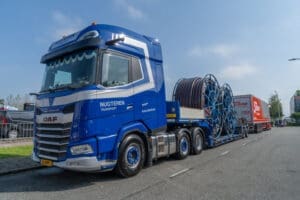
Customer Case: How Nugteren Transport gained Full control over its logistics processes with Adaption
Read more »Sources overview:
WOS.nl, CBS (Statistics Netherlands)
OnderGlas.nl
Production figures for greenhouse vegetables in the Netherlands
NieuweOogst.nl
Production figures for tomatoes in the Netherlands
GlastuinbouwNederland.nl
Export value of Dutch floriculture
Revenue of Royal FloraHolland
Harvest House, Growers United, Nature’s Pride, Greenpack
Establishment of major fresh produce players at the Honderdland business park
harvesthouse.nl, growersunited.nl, naturespride.nl, greenpack.nl
H.Z. Logistics
Relocation and opening of new logistics center at Honderdland
De Jong Verpakkingen
Opening of new storage halls at Honderdland
Municipality of Westland, Dutch Fresh Port, World Horti Center
Information on strategic location, sustainability initiatives, innovation, and knowledge development in Westland
